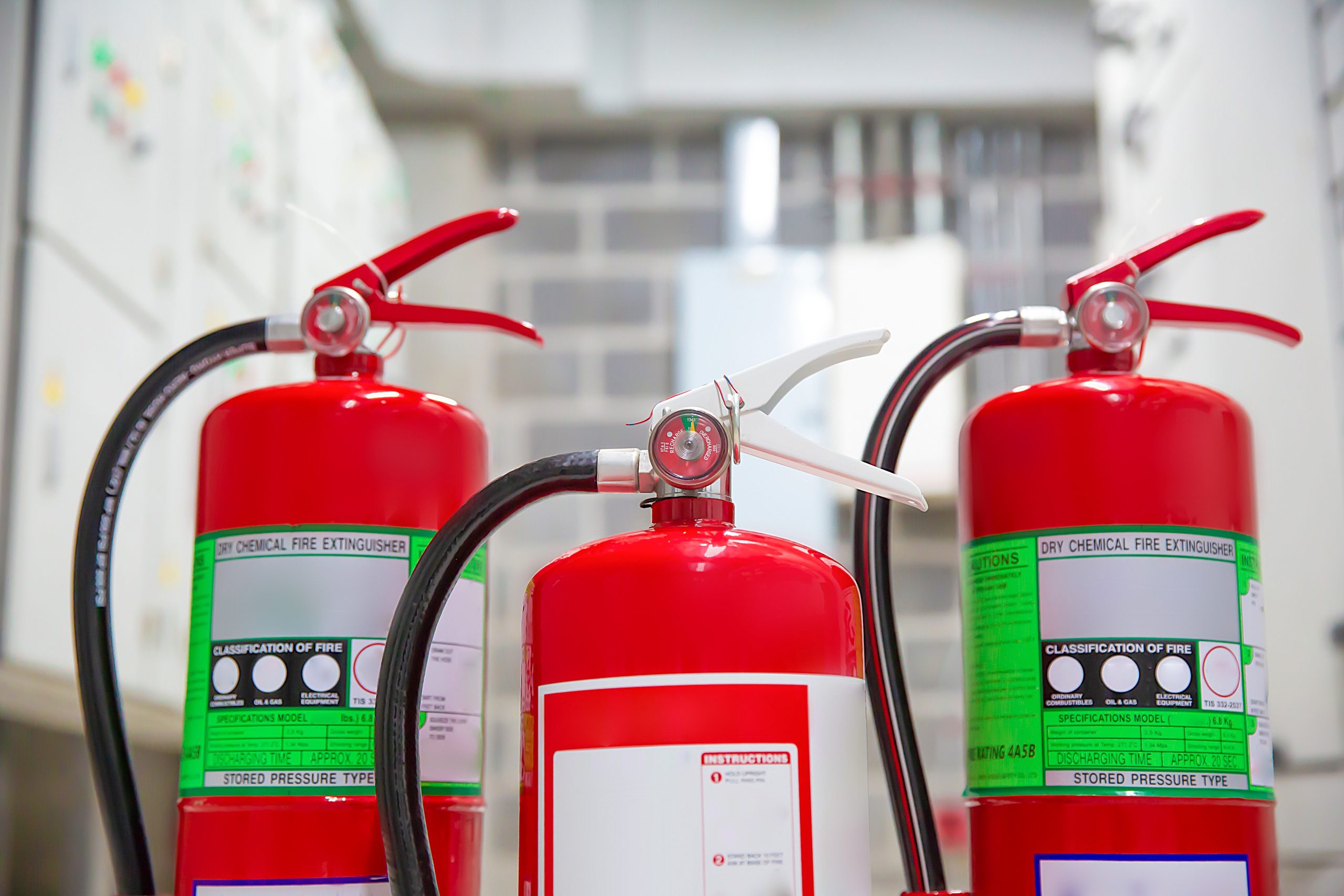
Fire Extinguisher Types and Uses
Fire extinguisher classes
Before diving into the extinguisher types, it’s important to understand the different fire classes. Fire extinguishers are classified according to the fire they are designed to extinguish. Here’s a quick rundown of the most common fire classes:
Class A: Common materials that burn easily, such as paper, wood, and fabrics
Class B: Flammable liquids such as gasoline, oil, and grease
Class C: Flammable gases such as propane, butane, and acetylene.
Class D: Metals that can catch fire easily, including magnesium, potassium, and sodium.
Class F: Cooking oils and fats
Electrical: Electrical equipment fires.
Types of fire extinguishers
- Water extinguishers (Red label)
- Suitable for: Class A fires only
- How it works: Water extinguishers work by cooling the burning material.
- Pros: Readily available and inexpensive.
- Cons: Not suitable for flammable liquids, electrical fires, or fires involving combustible metals. Water can also damage electronics and sensitive equipment.
- Water mist extinguishers (Red and white label)
- Suitable for: Class A fires
- How it works: Water mist extinguishers use a fine spray of water droplets to extinguish fires. The mist is more effective at penetrating burning materials than a solid water stream and reduces water damage.
- Pros: More effective on Class A fires than standard water extinguishers and less damaging to electronics.
- Cons: Not suitable for flammable liquids, electrical fires, or fires involving combustible metals.
- Foam extinguishers (Cream label)
- Suitable for: Class A and B fires
- How it works: Foam extinguishers smother the fire by creating a blanket of foam that cuts off the oxygen supply.
- Pros: Effective on both ordinary combustibles and flammable liquids.
- Cons: Can be messy to clean up and may not be suitable for use on delicate equipment.
- Dry powder extinguishers (Blue label)
- Suitable for: Class A, B, and C fires. There are also specific types of dry powder extinguishers for Class D fires.
- How it works: Dry powder extinguishers smother the fire by interrupting the chemical reaction.
- Pros: Versatile and can be used on a variety of fire types.
- Cons: The powder can be difficult to clean up and may leave a corrosive residue to electrical equipment.
- Carbon dioxide (CO2) extinguishers (Black label)
- Suitable for: Class B and C fires, and electrical fires
- How it works: CO2 extinguishers put out fires by suffocating them and removing oxygen.
- Pros: Clean and leaves no residue. Effective on electrical fires.
- Cons: Not suitable for Class A fires or ordinary combustibles. Can replace oxygen and pose a suffocation risk in enclosed areas.
- Wet chemical extinguishers (Yellow label)
- Suitable for: Class F fires involving cooking oils and fats
- How it works: Wet chemical extinguishers saponify (convert to soap) the burning fat, extinguishing the fire.
- Pros: Very effective on kitchen fires.
- Cons: Not for use on other types of fires.
Choosing the right fire extinguisher
The type of fire extinguisher required depends on the type of fire you are most likely to encounter. Here are some general guidelines:
- If you have a home office, a small dry powder extinguisher is a good all-purpose choice.
- If you have a kitchen, a wet chemical extinguisher is essential for fighting grease fires.
- If you have a workshop or garage, you may need a combination of extinguishers, such as a dry powder extinguisher for flammable liquids and a CO2 extinguisher for electrical fires.
Remember, it is always best to consult with a qualified fire safety professional to determine the right type of fire extinguisher for your specific needs.

